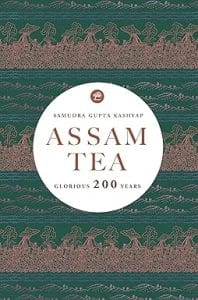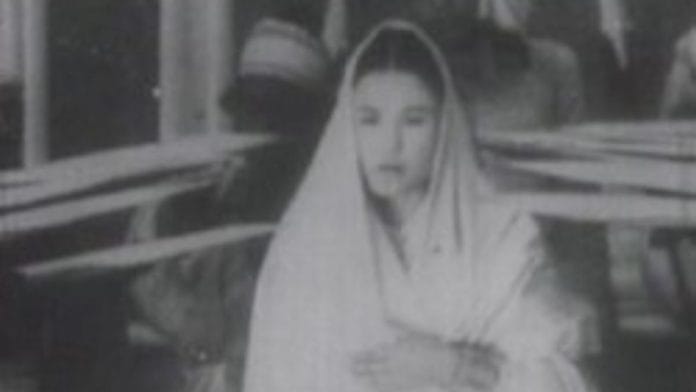It was Bolinarayan Bora’s essay titled Chah Bagisar Coolie (The Tea Garden Coolie), published in 1887 in ‘Mau’, a magazine which he edited and published from Kolkata, which is today seen as the most derogatory reference ever made in Assamese literature about the tea labourers.
Bora, also the first Assamese engineer (educated in London), wrote about the tea labourers in the most demeaning manner, which was almost racist. He also defended the British planters and asserted that there was no exploitation whatsoever of the tea labourers and that they lived happily inside the confines of the tea garden. Bora’s account however was immediately dismissed by none other than Lakshminath Bezbaroa, the doyen of modern Assamese literature, who wrote back to ‘Mau’ a strong-worded letter.
Terming Bora’s piece as tenga (sour in taste), Bezbaroa gave an account of how the miserable people were exploited from the day they were picked up from their original homes to be transported to Assam under sub-human conditions, and under what environment they were made to stay in the gardens.
“Figures of death are shown as having absconded in order to suppress the incidence of death of the labourers. Those labourers who were victims of atrocities are sent off to other gardens for a few days when government inspectors visit the gardens,” Bezbaroa wrote. Bora published Bezbaroa’s piece quite prominently in the subsequent issue of ‘Mau’, but not before refuting every comment as “not based on ground realities”.
The first major Assamese literary work reflecting life in a tea garden however is ‘Seuji Patar Kahini’, a novel by Rasna Barua (pen-name of Birinchi Kumar Barua, an eminent 20th century litterateur), published in 1954. Though the protagonist is a poor Assamese villager who lands up in a tea garden seeking a job, the novel delves into the harsh exploitative life of tea labourers, juxtaposed with the morally oppressive life in a typical Assamese village. At the same time it also reflected upon the lives of the Europeans who came to work in tea gardens in far-away Assam.
In the subsequent decades, several Assamese authors have dwelt with life in tea gardens, but most looked at the Assamese babu rather than the exploited labourer. One such novel is ‘Dawor Aru Nai’ by Jogesh Das (1955). Written with a tea garden as the backdrop, the novel dwelt largely with the impact of the Second World War on the society and economy of Assam, at the same time also looking into the struggling life of the tea labourers in the given scenario. Birendra Kumar Bhattacharyya’s ‘Kalar Humuniya’ (1982) on the other hand is the story of how the labourers of a garden owned by an Englishman fight suppression and oppression inflicted upon them.
Also read: Even before the world knew Rabindranath Tagore, a Tripura king honoured him as ‘Great Poet’
So far, however, it is Umakanta Sarma’s ‘Ejak Manuh Ekhan Aranya’ (1986) which is acknowledged as the best Assamese work of fiction depicting the life and struggle of the tea labourer who was brought to Assam on false promises. The novel tells the story of how thousands of poor people were lured from central India to work in the tea gardens of Assam, how they were exploited generation after generation, and yet, how they had become inseparable from the greater Assamese society despite keeping alive their respective traditions, culture, music, dance and beliefs.
Described as a significant work of fiction in the Assamese language, the novel has also considered the impact of the freedom struggle on the tea labourers, formation and role of the trade union organizations, and the struggle for protection of their rights in a lucid manner.
Several Assamese authors on the other hand have written short fiction and stories centering round life in the tea gardens. Among them, Nirode Choudhury’s ‘Chameli Memsaab’ (1968) became the most famous among all, thanks to an Assamese film made with the same title in 1975. Golap Khaund’s ‘Girmit’ is a collection of ten short stories, all revolving around the life of the indentured labourers and their lives as deeply woven with the tea plantations of colonial and post-colonial Assam.
Assamese cinema on the other hand was literally born in a tea garden. ‘Jaimati’ (1935), the first Assamese film directed and produced by Jyotiprasad Agarwala, had a semi-historical story. But Agarwala had shot most portions of the film in the factory of Bholaguri tea estate (owned by his family) which he had converted into a makeshift film studio.
In the nearly ninety years of the journey of Assamese cinema, ‘Era Bator Sur’ (1956), directed by Bhupen Hazarika, was the first Assamese film whose story was set in a tea garden. Though the protagonist and the heroine do not belong to the tea tribes, the film ultimately takes the audience through a journey of discovering folk music in the backdrop of the difficult lives of the labourers.
It is also the first time that folk songs picked up from the tea-tribes community were used in a big way. ‘Kecha Sone’ (1959) on the other hand was the first film whose story was entirely woven around the lives of the tea labourers. With Phani Sharma as its director and Bhupen Hazarika as its music director, the film, with story and script by Bharat Barpujari, was incidentally produced by the Assam branch of Indian National Trade Union Congress (INTUC).
The next film using the tea garden as a backdrop or depicting life therein was Amar Pathak’s ‘Sangram’ (1968). The year 1975 saw the release of two Assamese films based on life in tea gardens. The first was ‘Ratanlal’, directed by Nalin Duara and based on a story written by Jogesh Das, and was produced by Asam Chah Mazdoor Sangha.
The second was ‘Chameli Memsaab’, directed by Abdul Mazid and based on a story by Nirode Choudhury; it was produced by Seuj Bolchabi Sanstha. Story of a young girl from the tea tribes who was exploited and duped by a European manager, ‘Chameli Memsaab’ however remains the most remembered film because of the songs written and composed by Bhupen Hazarika, which also fetched him the Best Music Director’s award from the Government of India that year.
Bhupen Hazarika’s treatment and use of traditional folk music of the various tea tribe communities in ‘Chameli Memsaab’ gave an entirely new lease of life to the cultural treasures which these communities had so dearly preserved for more than a century despite their hard life in Assam’s tea gardens after being uprooted from their original homes.
In the later years, several other Assamese films have been made using life in tea gardens as a theme or backdrop. Some of them are Aparupa (1982, dir: Jahnu Barua), Budhu Arjun (1997, dir: Padma Koiri), Eti Koli Duti Paat (2003, dir: Nayanmoni Barua), Maya (2005, dir: Rajesh Bhuyan), Saat Nambarar Sandhanat (2016, dir: Abdul Mazid), and Mini (2024, dir: Arunjit Bora).
 This excerpt from Samudra Gupta Kashyap’s ‘Assam Tea: Glourious 200 Years’ has been published with permission from the Publication Board, Assam.
This excerpt from Samudra Gupta Kashyap’s ‘Assam Tea: Glourious 200 Years’ has been published with permission from the Publication Board, Assam.






